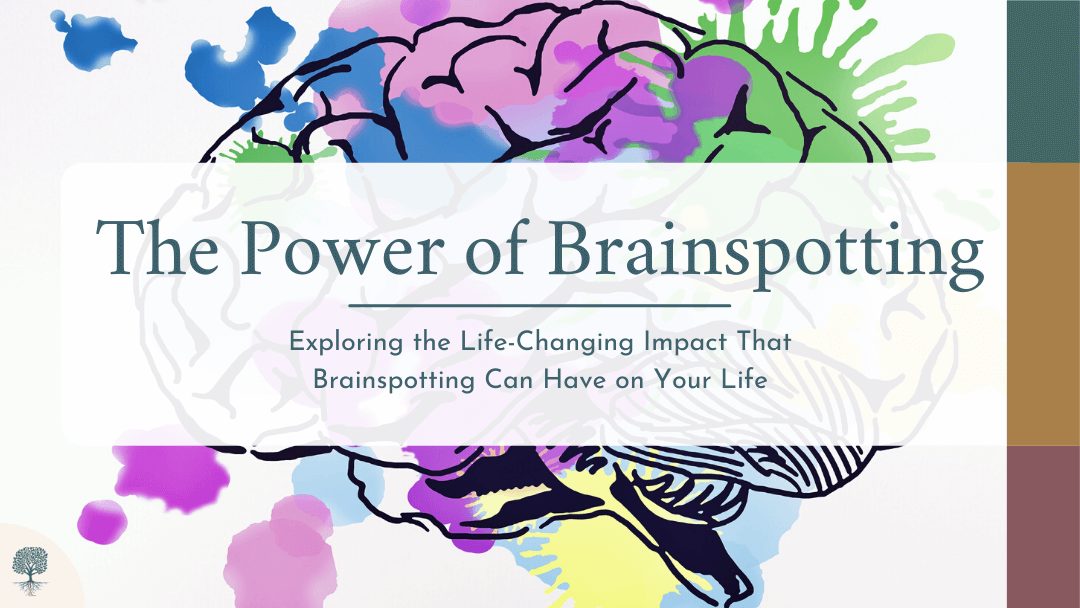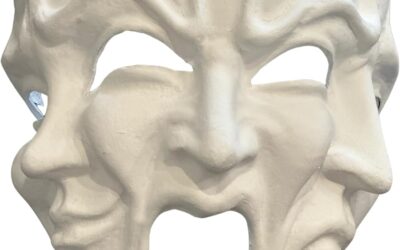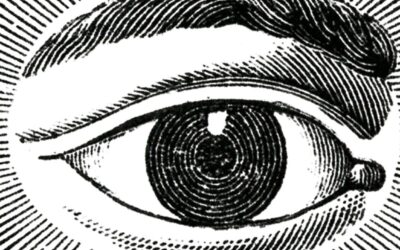
Yellow Garden Spider from Hoover Alabama
Yellow garden spiders have a fat yellow abdomen slicked with yellow and black stripes. They weave a tiny white squiggle in the center of their webs. I stare at the faintly milky zig zag as it sways when wind moves the web and stirs the iris sepals it hangs between in my mothers garden. I am biting on the seam of injection molded red plastic in a 1980s baby walker. I ponder the way that Alabama red clay cakes in the grooves of my tennis shoe and poke it with a stubby finger and later a small twig. My dreams were a miasma of detailed childhood imagery. I vividly re-experienced half remembered and seemingly insignificant moments from when I was a toddler in photorealistic detail. When I woke up my phone rang. “Did you have weird dreams?” asked a colleague “Everyone is saying their dreams are weird.”.
I had just had my first session of brainspotting on my first day of brainspotting training. You learn brainspotting by having the brainspotting process done to you and by conducting the brainspotting experience on other trainees. The brainspotting training teaches clinicians to “hold” a patient’s experience without analysis or judgment. Clinicians are taught to turn off the impulse to try and teach the patient anything. Instead the patient’s own experience is what the patient learns from when the clinician can “make room” to let the experience unfold. Unlike cognitive models of psychotherapy, brainspotting does not train you to analyze your experience. It teaches you nothing. Brainspotting practitioners are taught to feel instead of understand so that they can “hold” the experience of patients who are doing the same.
Brainspotting began as a branch of EMDR and quickly became its own modality. Developed to treat trauma and PTSD, providers quickly discovered that it works for just about everything else as well. The technique itself is extraordinarily simple; a clinician holds a pointer and a patient looks at it. Despite that, the nuances of the technique can be infinitely complex. Brainspotting helps most people get to know, and get comfortable with the parts of themselves that they are the most out of touch with.
How does Brainspotting work?
In trauma therapy teaching patients to let go of their cognitive “thinky” brain and experience the “feely” body brain is the name of the game. Our subcortical brain is the oldest part of the brain. It rapidly directs our use of energy for survival into fight, flight, and freeze responses. This process takes place before we intellectually or linguistically understand why we are thinking or what we are doing. Teaching patients to feel their unconscious emotions and their somatic reactions to trauma is the only way to get to the root of how trauma is affecting the brain. Our ego defends us against experiencing the unconscious parts of our being. It is threatened by the fact that parts of us that we do not understand can control us so deeply.
The philosopher Martin Heidegger wrote that language was the house of being. He meant to that our words were all we were. Language is implied to be a confining prison. The philosopher René Descartes stated that “I think, therefore I am”. His assumption that cognition was the essence of what made us real underlies most of modern medical science. I wonder how the landscape of existential philosophy would have changed if these philosophers had ever had a brainspotting session. Our ego driven cognition does not want to turn itself off. It does not want to admit that there is a deeper and older part of the brain . Our mid and sub brains are arguably the most important component to our sense of self and understanding of the world. Some times called our lizard brain, they come from our reptilian ancestry and are responsible for our intuitive and unconscious snap judgements. Put simply we are not logic or rational creatures. A large component of our instinctual thinking occurs before we are thinking in words or with intellect.
David Grand, the creator of brainspotting, made the point that our neocortex front brain thinks that it is all of us, but we must teach it that we have a mid and sub cortex that are part of us as well. Our brains feel before we think. It is our cognitive neo cortex brain that sometimes forget to be aware of the powerful energy our feeling and intuition holds. The reason that trauma therapy is difficult for patients and providers is that our ego defends us from the experience of the unconscious feeling and emotion. Teaching patients to let go of what they know is hard. Facing younger and traumatized parts of self in the deep brain is not something that our intellect can help us with. Even though we have an intellectual understanding of trauma and how it affects us, that does not help us loosen its effect on our lives. There is not a formula or even a manual for good therapy. Effective therapy helps you find and face the parts of yourself we avoid.
What does Brainspotting feel like?
Brainspotting is amazingly effective at this. Brainspotting strips away our defenses and plunges our awareness into the deepest and most recessed areas of ourselves. Brainspotting turns our gaze to the places that we most avoid. Brainspotting allows us to repair and rewire the damaged assumptions trauma makes us hold about ourselves, the world and our relationships. Cognitive therapy teaches us to train and flex our intellect. This is one of the reasons that cognitive therapy alone can not take patients to the deep roots of trauma’s effect on the brain. Somatic and brain based therapies can teach us to feel ourselves again.
It is a common phenomenon that patients “lose” language during a brainspotting session and start to feel a deep emotion and intuitive self. It is normal to realize your body and emotional state is shifting and moving without your permission. Put another way our physical and emotional selves are able to be experienced without cognition interfering. This is similar to the way that is similar to how psychedelics reorient our consciousness. Brainspotting can help us feel the emotional states “under” our lives that we often run from and avoid. It can help us confront and repair emotional damage and unremembered pain.
Carl Jung observed that symbols and metaphors are the language of the unconscious. This is perhaps why when we stir the subconscious brain with brainspotting it causes highly mythic or symbolic dreams. The two hallmarks of a brainspotting dream are vividly remembering minutiae from childhood in photo realistic detail and also dreams with highly allegorical narratives. Patients often remember “important” and “deep” dreams that they can’t quite explain or put into words. After the dream images from my childhood in my first brainspotting session I began to have dreams about shadowy wolf-like figures in the woods . They peered through the windows of Vestavia home to eye my children.
During the brainspotting sessions I felt myself dropping down into a terrifying feeling of inadequacy and inferiority that had always underlaid my life. I hadn’t noticed it or confronted the feeling. I realized that wit, education, learning skills and even my career were nothing more than mechanisms for me to turn this feeling off and run from it.
Brainspotting was the first kind of therapy that allowed me to not only identify the feeling that controlled my behavior from the shadows, but also to face it and master it. Social workers are often wounded healers. Therapy can become a crutch when therapists won’t do their own work. Therapists can become, unconsciously, obsessed with giving others the medicine that they themselves need.
Many Brainspotting therapists, like myself and David Grand, began as EMDR practitioners. EMDR takes patients into the deep brain just like brainspotting. The difference between the modalities is that EMDR immediately makes patients analyze and cognitivize the experience of the deep brain. What you get in the room is what you get with EMDR. In a brainspotting session a therapist is simply opening a box in the patients brain. The majority of the processing takes place over several days while the patients brain decides with the experiences in the box that we have decompartmentalized.
Brainspotting changed my life. I had been in many types of therapy for years and nothing else had this effect. After Brainspotting I was able to notice when I was reacting based on emotion while hiding in my intellect. I was able to feel the way that my body was reacting based on how I felt. I didnt need to hunch my back when angry. I didn’t need to twist my spine when I was sad. Instead I noticed the, previously unconscious, reaction and chose to do it or not. I was able to stop avoiding the problems in my life and deal with the deepest part of the emotional root of my own pain. Brainspotting gives us more time and room in our own head to react to how we are feeling. Brainspotting was the inspiration for the name Taproot Therapy Collective and the direction of my career and practice.
Just like the technique itself the effects of brainspotting are subtle but profound. Before brainspotting, I thought therapy was about learning information or knowing something new. After brainspotting I realized that therapy was more than this. Brainspotting changed my life but afterward I didn’t know anything new. There was no big reveal or discovery. Brainspotting let me feel how big my own soul was and how much work I have to do in the project of finding and becoming that potential. If anything, brainspotting helped me forget. I forgot my ego and saw how much my own intellect was stopping me from experiencing who I really was.
We absolutely do not exist because we think. We exist despite the fact that we are trying to think ourselves into existing. The mystic Simone Weil wrote that “The smart man proud of his intellect is like the prisoner proud of his jail”. Language is not the house of being. It is the house that we are trying, foolishly, to cram being into. We are so much bigger than we can think. Trauma makes us feel and act small but we are all bigger than we are able to know. Outside of our intellect lies a tremendous felt sense of creativity, intuition and a larger more whole self. We do not have to learn anything to find it. All we have to do is stop talking, stop thinking and begin to listen to who we are.
“Behold your thoughts and feelings….there stands a mighty ruler, an unknown sage—whose name is Self.”
Bibliography:
Heidegger, Martin. “The Nature of Language.” On the Way to Language, translated by Peter D. Hertz, HarperOne, 1971.
Descartes, René. Meditations on First Philosophy. 1641.
Grand, David. Brainspotting: The Revolutionary New Therapy for Rapid and Effective Change. Sounds True, 2013.
Jung, Carl G. Man and His Symbols. Anchor Press, 1964.
Weil, Simone. Gravity and Grace. Routledge, 2002.
Nietzsche, Friedrich. Thus Spoke Zarathustra. Translated by R.J. Hollingdale, Penguin Classics, 1969.
Further Reading:
van der Kolk, Bessel A. The Body Keeps the Score: Brain, Mind, and Body in the Healing of Trauma. Penguin Books, 2014.
Siegel, Daniel J. The Developing Mind: How Relationships and the Brain Interact to Shape Who We Are. Guilford Press, 2015.
Damasio, Antonio. The Feeling of What Happens: Body and Emotion in the Making of Consciousness. Harcourt Brace, 1999.
Levine, Peter A. Healing Trauma: A Pioneering Program for Restoring the Wisdom of Your Body. Sounds True, 2008.
Gallese, Vittorio, and Michele Guerra. “Embodying Stories: Narrative Comprehension and the Default Mode Network.” Topoi, vol. 37, no. 1, 2018, pp. 115-127.
Ogden, Pat, and Janina Fisher. Sensorimotor Psychotherapy: Interventions for Trauma and Attachment. W.W. Norton & Company, 2015.
Rossi, Ernest Lawrence. The Psychobiology of Mind-Body Healing: New Concepts of Therapeutic Hypnosis. W.W. Norton & Company, 1993.
Mate, Gabor. When the Body Says No: Exploring the Stress-Disease Connection. Wiley, 2011.
Emerson, David, and Elizabeth Hopper. Overcoming Trauma and PTSD. New Harbinger Publications, 2011.
















0 Comments